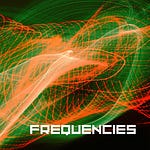Today, I'm showing into a piece that turns the abstract beauty of prime numbers into a musical experience.
The Concept: A Different Approach
Here's what makes this composition intriguing: it takes the first ten odd prime numbers (3, 5, 7, 11, 13, 17, 19, 23, 29, 31) and transforms them into musical phrases. Each number determines how many notes appear in its sequence. Simple? Yes. Different? Indeed.
One interesting point is that I used Sampleson’s Rand, a plugin that gives me random sounds every time I press the central button. It added a layer of unpredictability to something that is highly predictable and studied.
How It Actually Works
Picture this: The piece starts with just two notes, like a gentle heartbeat. Then comes a three-note phrase, followed by five notes, then seven... As the prime numbers grow, so does the complexity of the music.
The Magic of Mathematical Music
What's truly interesting is how these prime-numbered phrases interact. They never quite align in a predictable way (just like prime numbers themselves), creating a constantly shifting musical landscape that's both structured and unpredictable.
Why This Matters
In a world where most music follows predictable patterns of 4/4 or 3/4 time, "Prime" shows us there's beauty in breaking free from convention. It's not just about making music with math - it's about discovering new ways to experience both.
Check it on Spotify too:
Disclaimer: This newsletter explores the intersection of mathematics and music for entertainment and educational purposes. While the mathematical principles discussed are accurate, individual experiences with this type of experimental music may vary.










